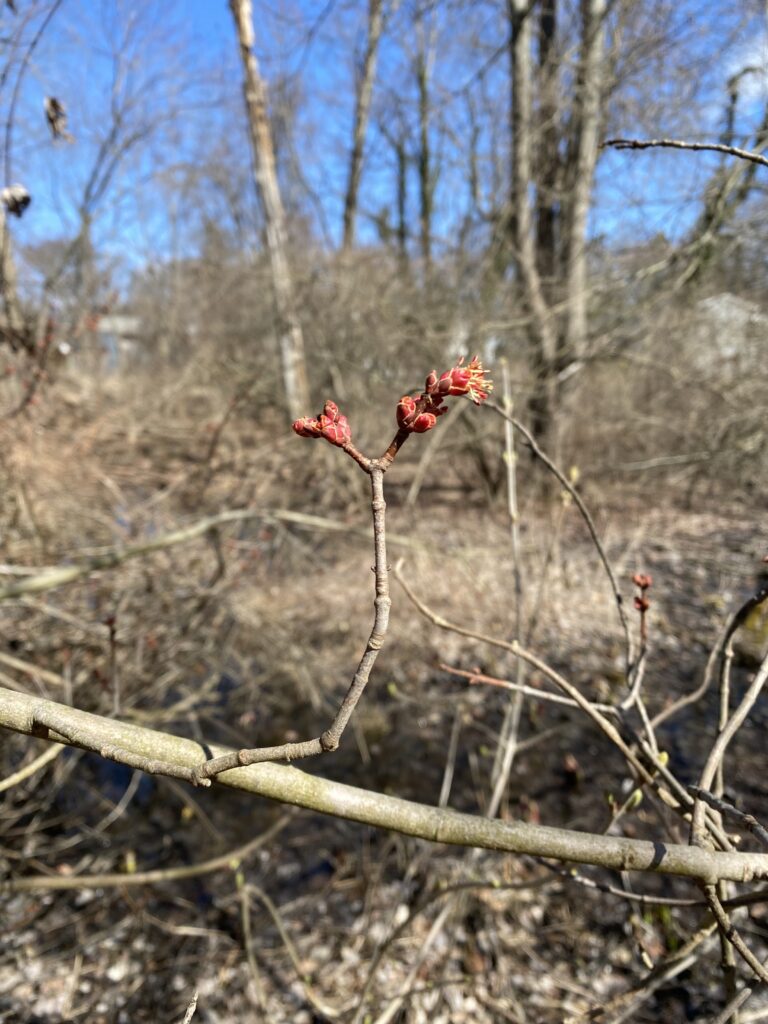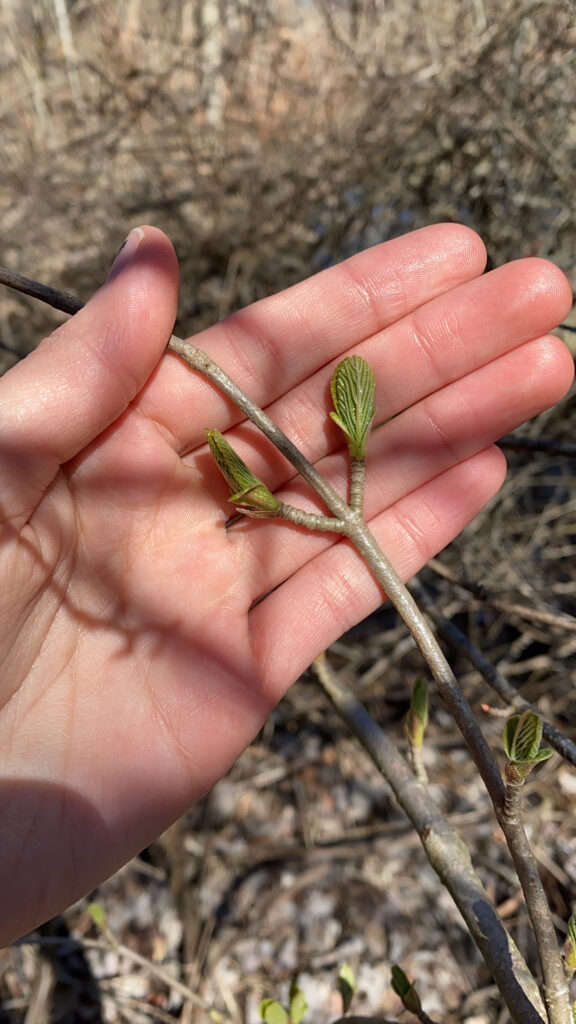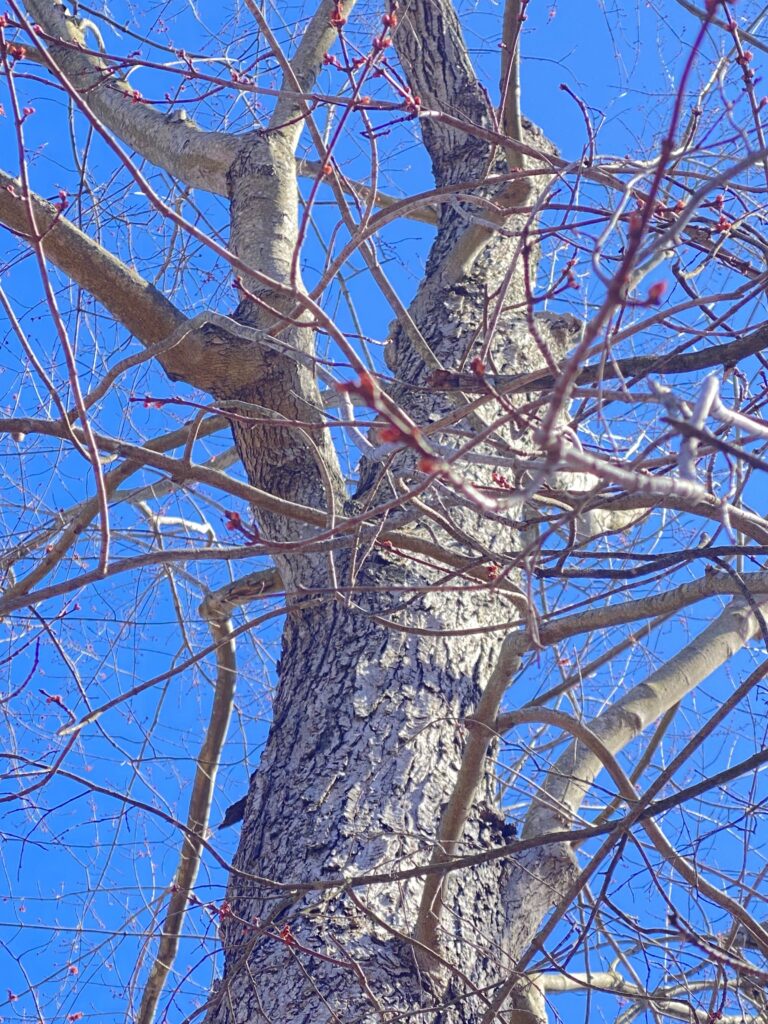For this spring break assignment, I chose to visit Red Maple Swamp in Scarsdale, NY. This swamp is located in the middle of a suburb of Westchester County. The swamp has many similarities to my phenology spot at Salmon Hole, including proximity to heavy traffic and noise pollution. However, Red Maple Swamp is smaller in size with less wildlife than Salmon Hole. The woods around Salmon Hole act as a riparian buffer for the Winooski River Watershed, while in comparison Red Maple Swamp has little effect on the Bronx River Watershed. The primary purpose of the swamp is to act as an urban natural area and be used for recreation. The woody plants are primarily red maple, with smaller plants like leatherwood, rosebushes, and a plethora of English ivy. The Swamp has been undergoing a restoration process to remove invasive species including English ivy and multifloras roses.
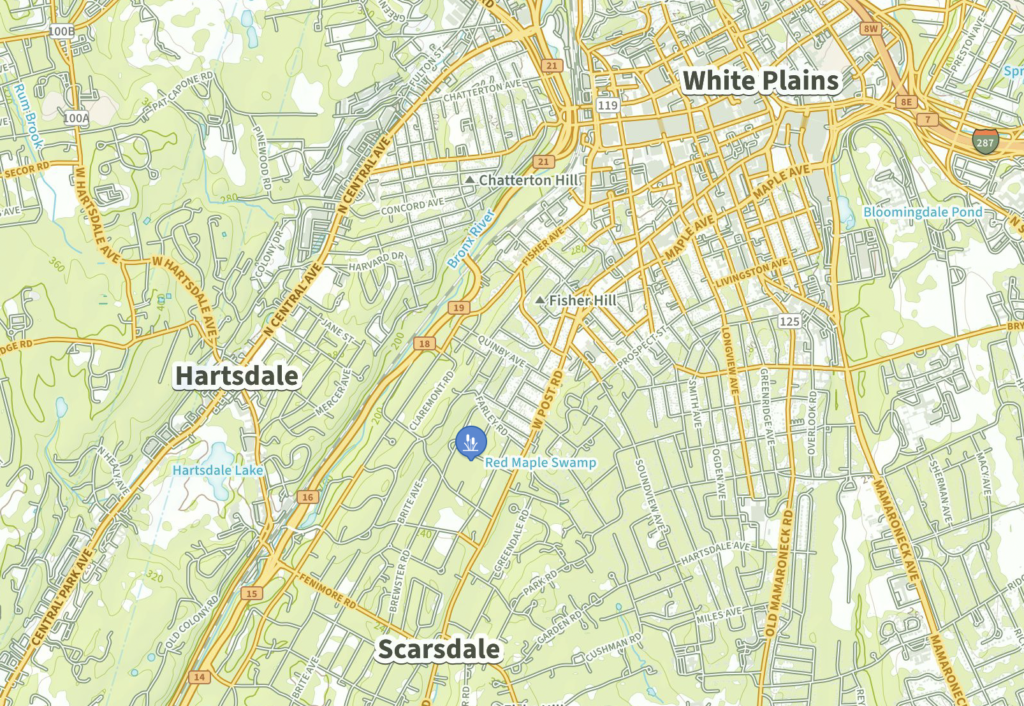
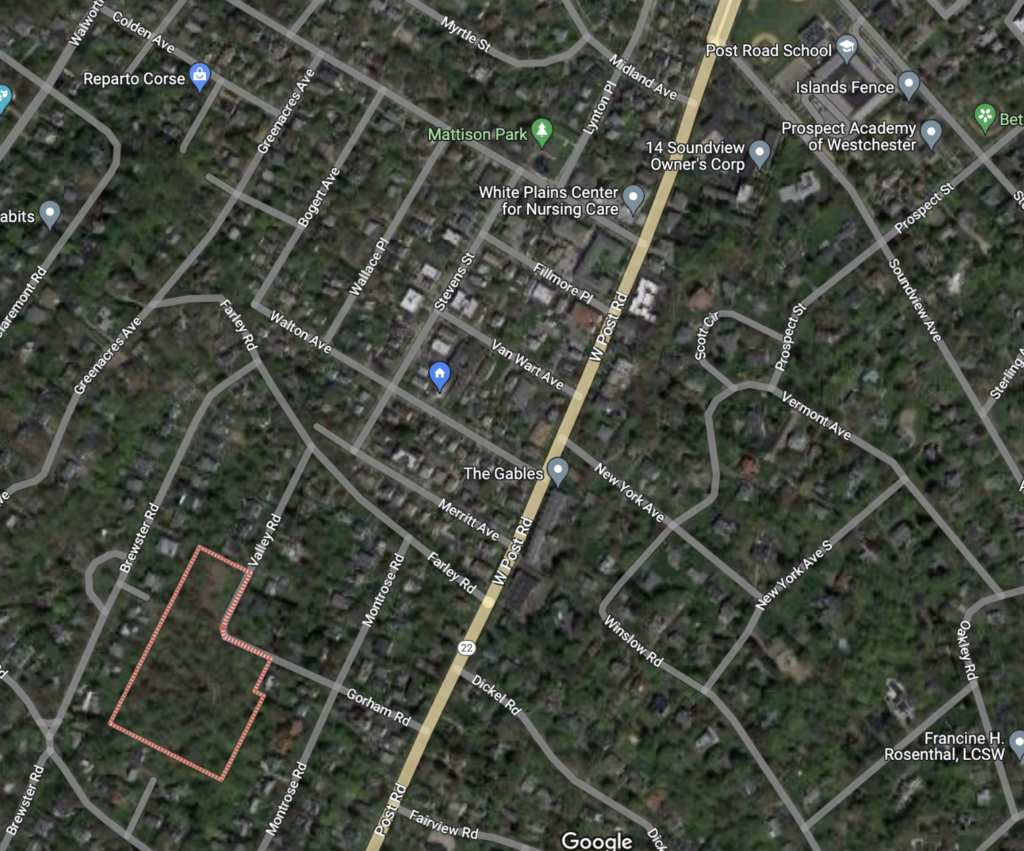
Some bird activity could be heard while in the swamp, but by the time I was able to hear chirping, a nearby house began landscaping with heavy machinery, causing the birds to quiet almost immediately. I spotted one nest in a tall tree while walking off the two trails. The phenological conditions of the woody plants were vastly different from those in Burlington. This was due to the difference in latitude between New York and Vermont, resulting in a difference in temperatures and climate. It was far warmer and sunnier in New York than Vermont, with no snow present in Red Maple Swamp during my visit!
Some Red Maple seedlings have begun budding, while some more mature trees have already begun blooming! In addition, eastern leatherwoods were also spotted blooming and rosebushes were seen budding. There were a few young American Beeches at the entrance to the swamp, and they still had leaves attached to them that stayed on through winter. There were some coniferous trees (small Eastern Hemlocks) that showed signs of dying. Vines were actively growing on larger woody plants.
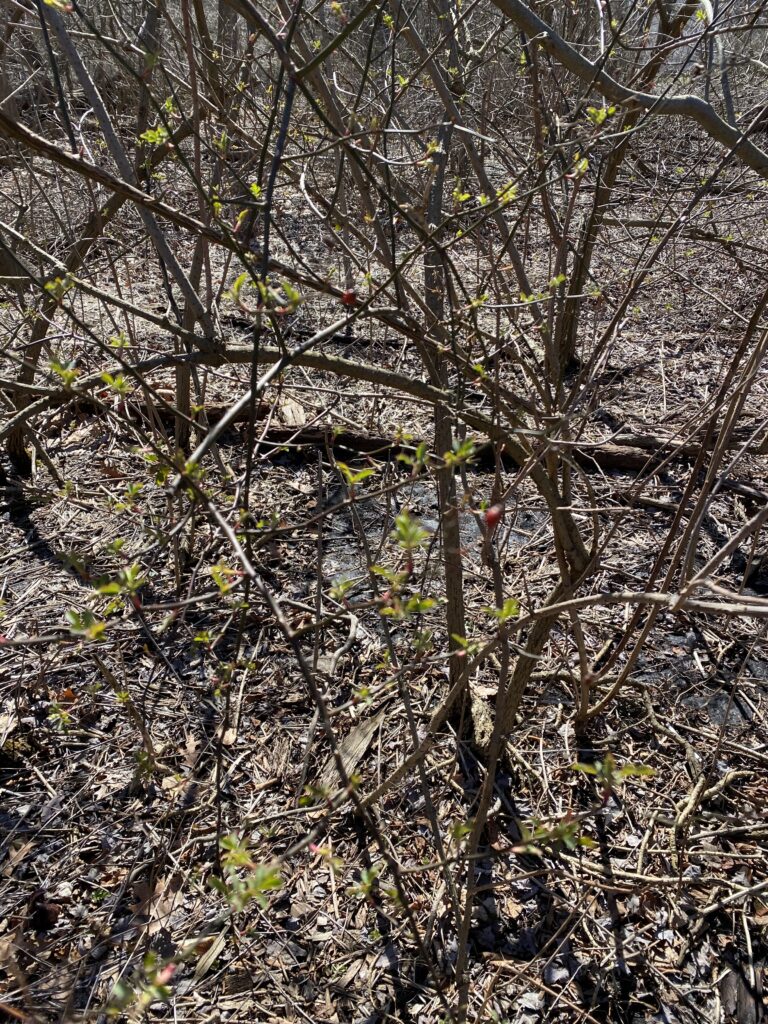
Budding rosebush!
